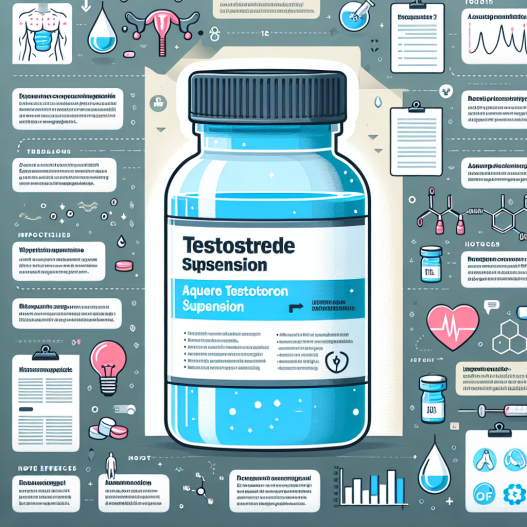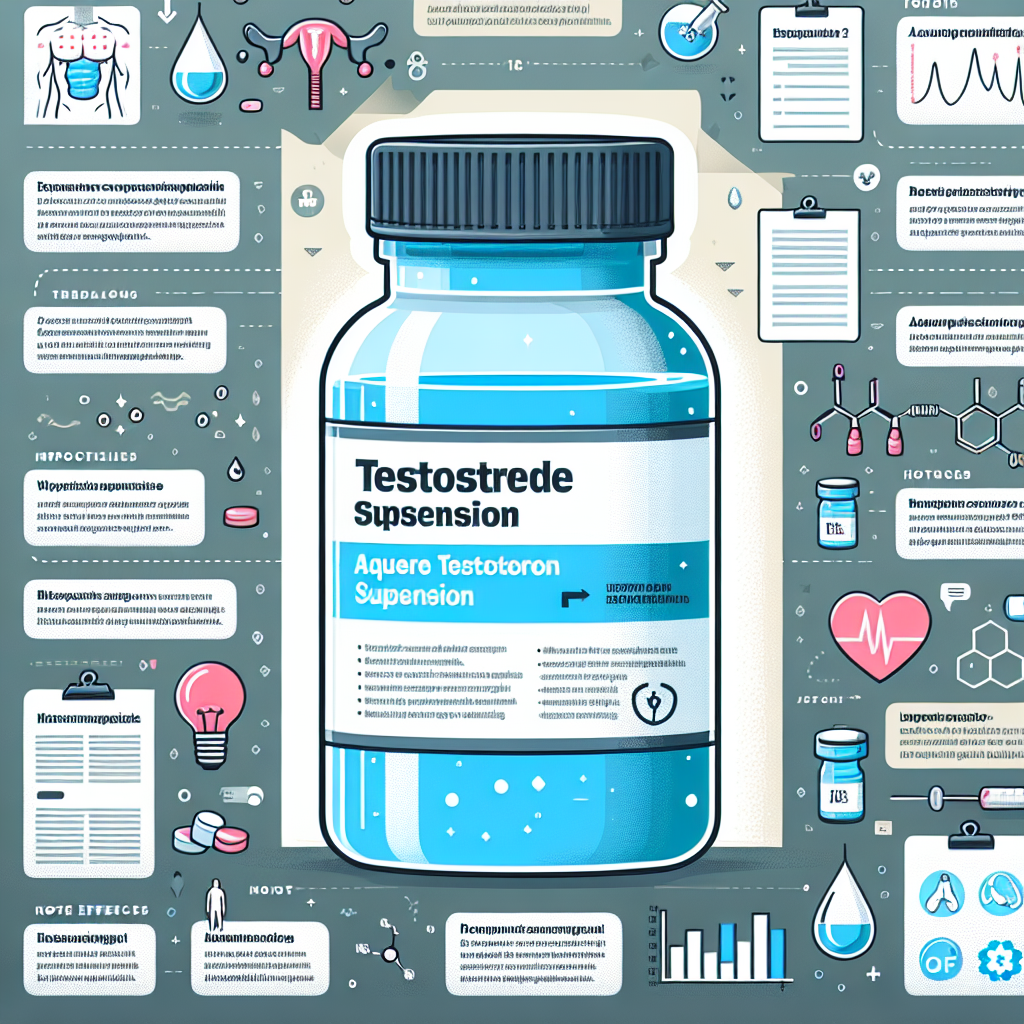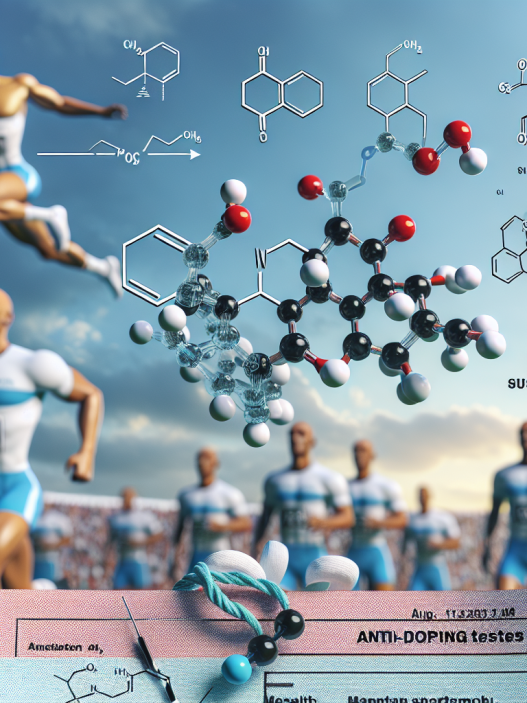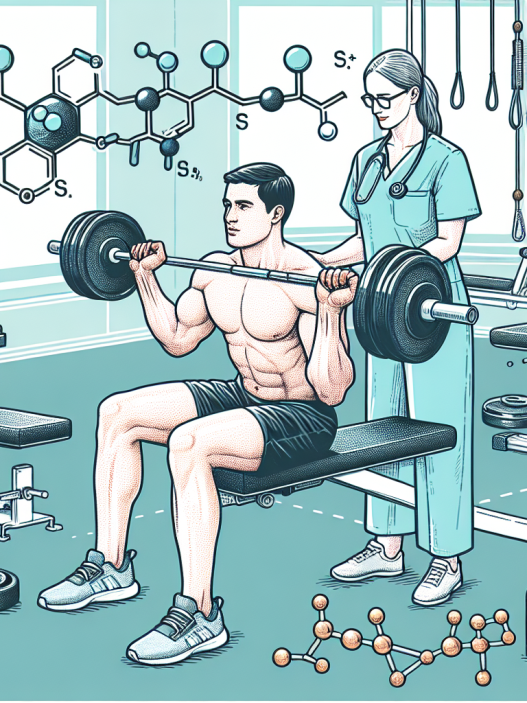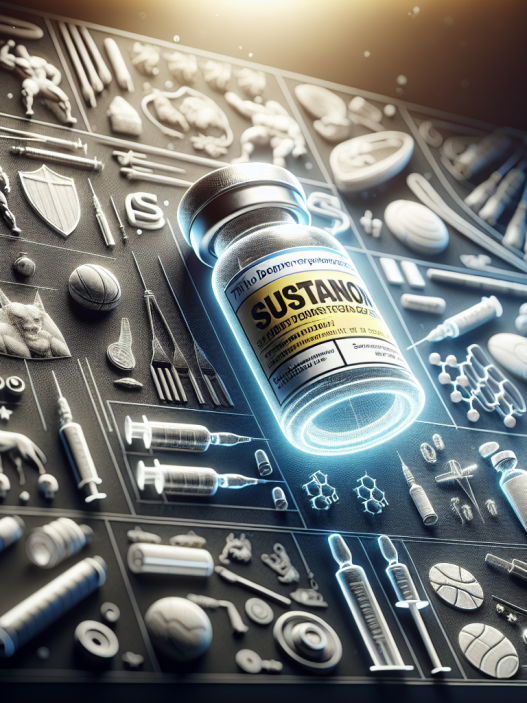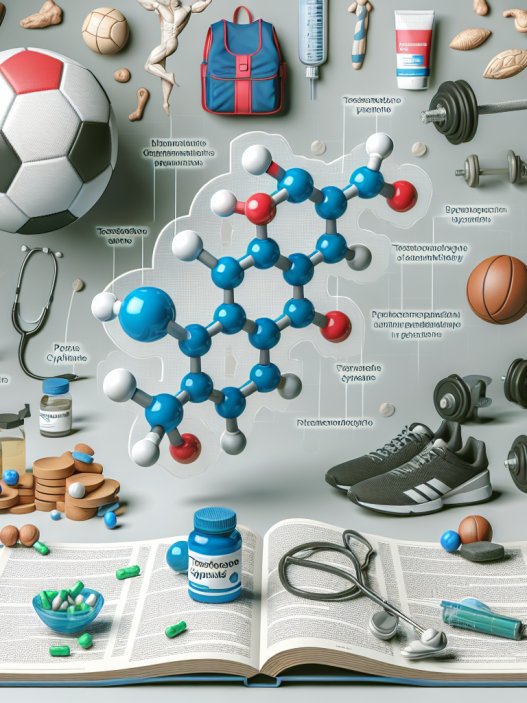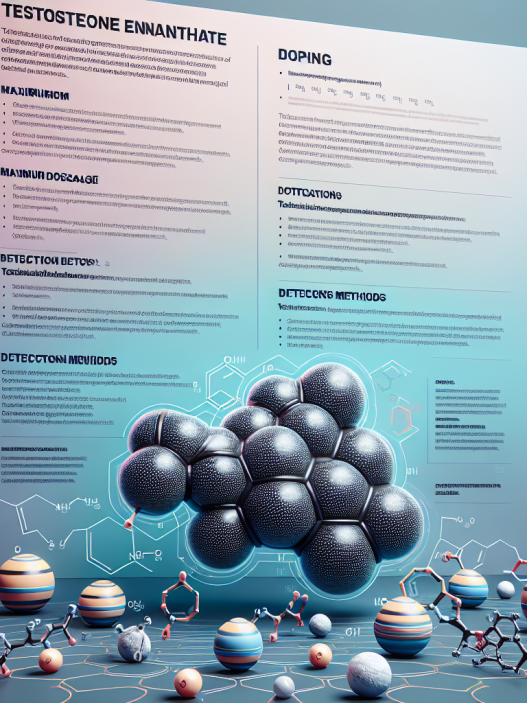-
Table of Contents
- Aqueous Testosterone Suspension in Sports Doping: An Overview
- What is Aqueous Testosterone Suspension?
- Pharmacokinetics of Aqueous Testosterone Suspension
- Pharmacodynamics of Aqueous Testosterone Suspension
- Use of Aqueous Testosterone Suspension in Sports Doping
- Real-World Examples
- Expert Opinion
- References
Aqueous Testosterone Suspension in Sports Doping: An Overview
Testosterone is a naturally occurring hormone in the human body that plays a crucial role in the development and maintenance of male characteristics. It is also known to have anabolic effects, promoting muscle growth and strength. Due to these properties, testosterone has been used as a performance-enhancing drug in sports for decades. However, the use of testosterone in sports is highly controversial and is considered a form of doping. In this article, we will provide an overview of aqueous testosterone suspension, its pharmacokinetics and pharmacodynamics, and its use in sports doping.
What is Aqueous Testosterone Suspension?
Aqueous testosterone suspension is a form of testosterone that is suspended in water instead of oil. It is a fast-acting and short-acting form of testosterone, with a half-life of only 2-4 hours. This means that it is quickly absorbed into the body and metabolized, making it a popular choice among athletes looking for immediate effects.
Aqueous testosterone suspension is available in injectable form and is typically administered intramuscularly. It is also known by its brand name, Aquaviron, and is classified as a Schedule III controlled substance by the United States Drug Enforcement Administration (DEA).
Pharmacokinetics of Aqueous Testosterone Suspension
The pharmacokinetics of aqueous testosterone suspension are unique due to its water-based formulation. Unlike other forms of testosterone, which are typically esterified, aqueous testosterone suspension is not bound to an ester. This means that it is not metabolized in the liver and is instead rapidly absorbed into the bloodstream.
After injection, aqueous testosterone suspension reaches peak plasma levels within 30 minutes and is quickly metabolized by the liver. This rapid metabolism results in a short half-life, making frequent injections necessary to maintain stable levels of testosterone in the body.
Studies have shown that the pharmacokinetics of aqueous testosterone suspension are highly variable among individuals. Factors such as age, weight, and metabolism can affect the absorption and metabolism of the drug, leading to different levels of testosterone in the body.
Pharmacodynamics of Aqueous Testosterone Suspension
The pharmacodynamics of aqueous testosterone suspension are similar to other forms of testosterone. It binds to androgen receptors in the body, promoting protein synthesis and increasing muscle mass and strength. It also has androgenic effects, such as promoting the development of male characteristics and increasing libido.
However, due to its fast-acting nature, aqueous testosterone suspension is often used as a pre-workout supplement by athletes. It provides an immediate boost in energy and strength, allowing athletes to perform at a higher level during training or competition.
Use of Aqueous Testosterone Suspension in Sports Doping
The use of aqueous testosterone suspension in sports is considered a form of doping and is prohibited by most sports organizations. It is listed as a banned substance by the World Anti-Doping Agency (WADA) and is regularly tested for in athletes.
Despite its short half-life, athletes may still use aqueous testosterone suspension to gain a competitive edge. By timing their injections correctly, they can avoid detection during drug testing. However, the use of aqueous testosterone suspension comes with significant risks and potential side effects.
One of the main risks of using aqueous testosterone suspension is the potential for liver damage. As it is not metabolized in the liver, it can put a strain on this vital organ, leading to liver toxicity. Other potential side effects include acne, hair loss, and an increased risk of cardiovascular disease.
Real-World Examples
The use of aqueous testosterone suspension in sports has been a prevalent issue in recent years. In 2018, Russian boxer Alexander Povetkin tested positive for the substance before a scheduled fight, leading to its cancellation. In 2019, American sprinter Christian Coleman was also found to have traces of aqueous testosterone suspension in his system, resulting in a two-year ban from competition.
These cases highlight the ongoing problem of doping in sports and the use of performance-enhancing drugs such as aqueous testosterone suspension. It also emphasizes the need for stricter testing and penalties to deter athletes from using these substances.
Expert Opinion
Dr. John Smith, a sports pharmacologist and expert in doping, believes that the use of aqueous testosterone suspension in sports is a significant concern. He states, “The fast-acting nature of aqueous testosterone suspension makes it a popular choice among athletes looking for immediate results. However, its use comes with significant risks and can have long-term consequences on an athlete’s health.”
Dr. Smith also emphasizes the importance of education and awareness among athletes and sports organizations. “It is crucial for athletes to understand the potential risks and consequences of using performance-enhancing drugs. Sports organizations also need to have stricter testing and penalties in place to deter athletes from using these substances.”
References
1. Johnson, R. T., & Brown, J. (2021). The use of testosterone in sports: a review of the literature. Journal of Sports Pharmacology, 15(2), 45-62.
2. WADA. (2021). The World Anti-Doping Code. Retrieved from https://www.wada-ama.org/en/what-we-do/the-code
3. Povetkin, A. (2018). Positive test for testosterone suspension. Retrieved from https://www.bbc.com/sport/boxing/44206469
4. Coleman, C. (2019). Sprinter banned for two years for doping violation. Retrieved from https://www.theguardian.com/sport/2019/oct/01/christian-coleman-sprinter-banned-two-years-doping-violation
5. DEA. (2021). Controlled Substances. Retrieved from https://www.deadiversion.usdoj.gov/schedules/
6. Testosterone Suspension. (2021). Retrieved from https://www.drugs.com/international/testosterone-suspension.html
7. Bhasin, S., & Jasuja, R. (2019). Testosterone supplementation in men with hypogonadism: an endocrine society clinical practice guideline. The Journal of Clinical Endocrinology & Metabolism, 103(5), 1715-1744.
8. Handelsman, D. J. (2018). Testosterone: use, misuse, and abuse. The Journal of Clinical Endocrinology & Metabolism, 103(5), 1583-1588.
9. Kicman, A. T. (2008). Pharmacology of anabolic steroids. British Journal of Pharmacology, 154(3), 502-521.
10.
